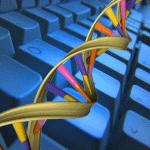Bioinformatics
|
22 august 2014 09:04:43 |
| Impact of variance components on reliability of absolute quantification using digital PCR (BMC Bioinformatics) |
|
Tweet Background:
Digital polymerase chain reaction (dPCR) is an increasingly popular technology for detecting andquantifying target nucleic acids. Its advertised strength is high precision absolute quantification withoutneeding reference curves. The standard data analytic approach follows a seemingly straightforwardtheoretical framework but ignores sources of variation in the data generating process. Thesestem from both technical and biological factors, where we distinguish features that are 1) hard-wiredin the equipment, 2) user-dependent and 3) provided by manufacturers but may be adapted by theuser. The impact of the corresponding variance components on the accuracy and precision of targetconcentration estimators presented in the literature is studied through simulation.
Results:
We reveal how system-specific technical factors influence accuracy as well as precision of concentrationestimates. We find that a well-chosen sample dilution level and modifiable settings such asthe fluorescence cut-off for target copy detection have a substantial impact on reliability and can beadapted to the sample analysed in ways that matter. User-dependent technical variation, includingpipette inaccuracy and specific sources of sample heterogeneity, leads to a steep increase in uncertaintyof estimated concentrations. Users can discover this through replicate experiments and derivedvariance estimation. Finally, the detection performance can be improved by optimizing the fluorescenceintensity cut point as suboptimal thresholds reduce the accuracy of concentration estimatesconsiderably.
Conclusions:
Like any other technology, dPCR is subject to variation induced by natural perturbations, systematicsettings as well as user-dependent protocols. Corresponding uncertainty may be controlled with anadapted experimental design. Our findings point to modifiable key sources of uncertainty that forman important starting point for the development of guidelines on dPCR design and data analysis with correct precision bounds. Besides clever choices of sample dilution levels, experiment-specific tuningof machine settings can greatly improve results. Well-chosen data-driven fluorescence intensitythresholds in particular result in major improvements in target presence detection. We call on manufacturersto provide sufficiently detailed output data that allows users to maximize the potential of themethod in their setting and obtain high precision and accuracy for their experiments. |
| 74 viewsCategory: Bioinformatics |
 Ten Simple Rules of Live Tweeting at Scientific Conferences (PLoS Computational Biology) Ten Simple Rules of Live Tweeting at Scientific Conferences (PLoS Computational Biology)Defining the Estimated Core Genome of Bacterial Populations Using a Bayesian Decision Model (PLoS Computational Biology) 
|
| blog comments powered by Disqus |
MyJournals.org
The latest issues of all your favorite science journals on one page
The latest issues of all your favorite science journals on one page



